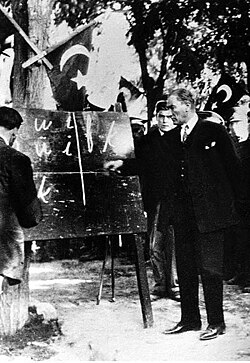IA sent me this article (in Chinese) about a new translation of George Orwell's 1984. It begins:
Yīngguó zuòjiā Qiáozhì Ōuwēiěr de míngzhù `1984' chūbǎn yuē 75 nián, jìnrì yíng lái shǒubù Táiwén bǎn. Yìzhě Zhōu Yíngchéng shuō, zhè shì tuīdòng `Táiyǔ zhèngchánghuà'de chángshì, ràng Táiyǔ mǔyǔzhě bùbì tòuguò Zhōngwén yìběn, yě néng jiēchù shìjiè jīngdiǎn wénxué
英國作家喬治‧歐威爾的名著「1984」出版約75年,近日迎來首部台文版。譯者周盈成說,這是推動「台語正常化」的嘗試,讓台語母語者不必透過中文譯本,也能接觸世界經典文學。
1984, a famous novel by British writer George Orwell, was published about 75 years ago and recently had its first Taiwanese version. Translator Zhou Yingcheng said that this is an attempt to promote the "normalization of Taiwanese" so that native Taiwanese speakers can access world classic literature without having to rely on Chinese translations.
IA points out that, as in the following quotation from the translator, "Zhōngwén 中文" (lit. "Chinese writing"), refers not only to written language but spoken as well:
Tā shuō:`Dāngshí zài guó wài jiǎng zhōngwén, chángcháng bèi dàng zuò zhōngguó rén, yúshì wǒ kāishǐ sīkǎo zìjǐ gēn táiwān de liánjié shì shénme, dé chū de jiélùn shì tái yǔ. Dàn wǒ tái yǔ bùgòu hǎo, yǒu shí wǒmen xiǎng jiǎng qiāoqiāohuà,(jiǎng zhōngwén) pà biérén tīng dǒng, jiù huì qiēhuàn chéng tái yǔ, dàn yòu méi bànfǎ wánzhěngde shuō
他說:「當時在國外講中文,常常被當作中國人,於是我開始思考自己跟台灣的連結是什麼,得出的結論是台語。但我台語不夠好,有時我們想講悄悄話,(講中文)怕別人聽懂,就會切換成台語,但又沒辦法完整地說」。
He said: "When I was speaking Chinese abroad, I was often mistaken for Chinese, so I began to think about what my connection with Taiwan was, and I concluded it was Taiwanese. But my Taiwanese is not good enough. Sometimes when we want to whisper, we are afraid that others will understand (what we are saying in Chinese), so we switch to Taiwanese, but we can't speak it completely."
Read the rest of this entry »
